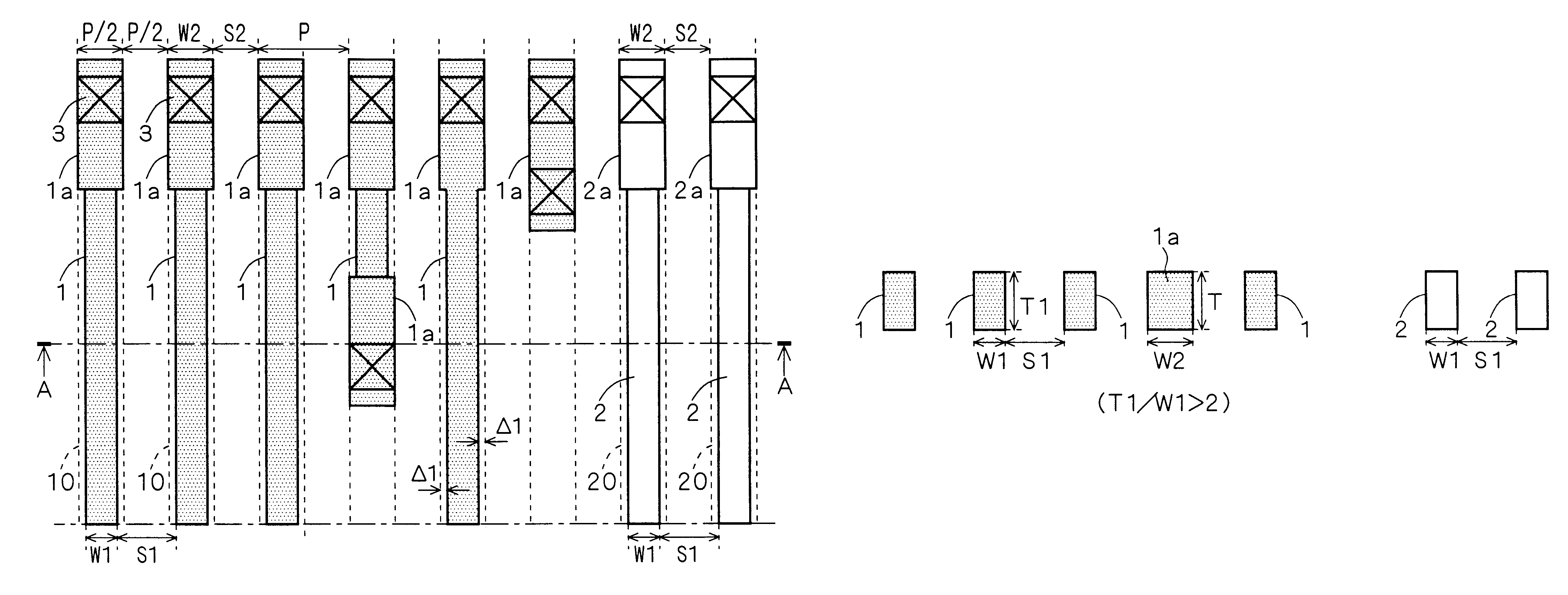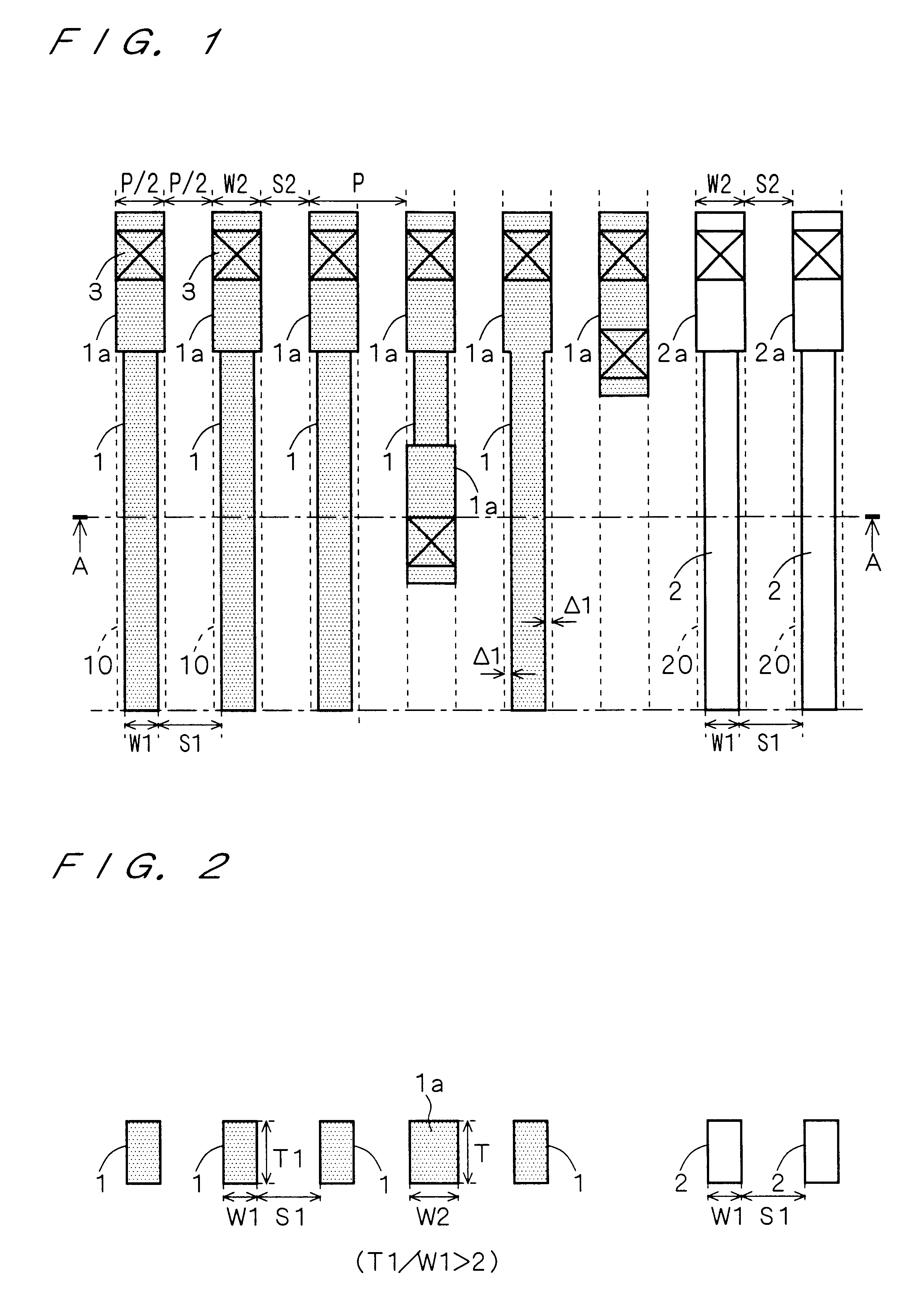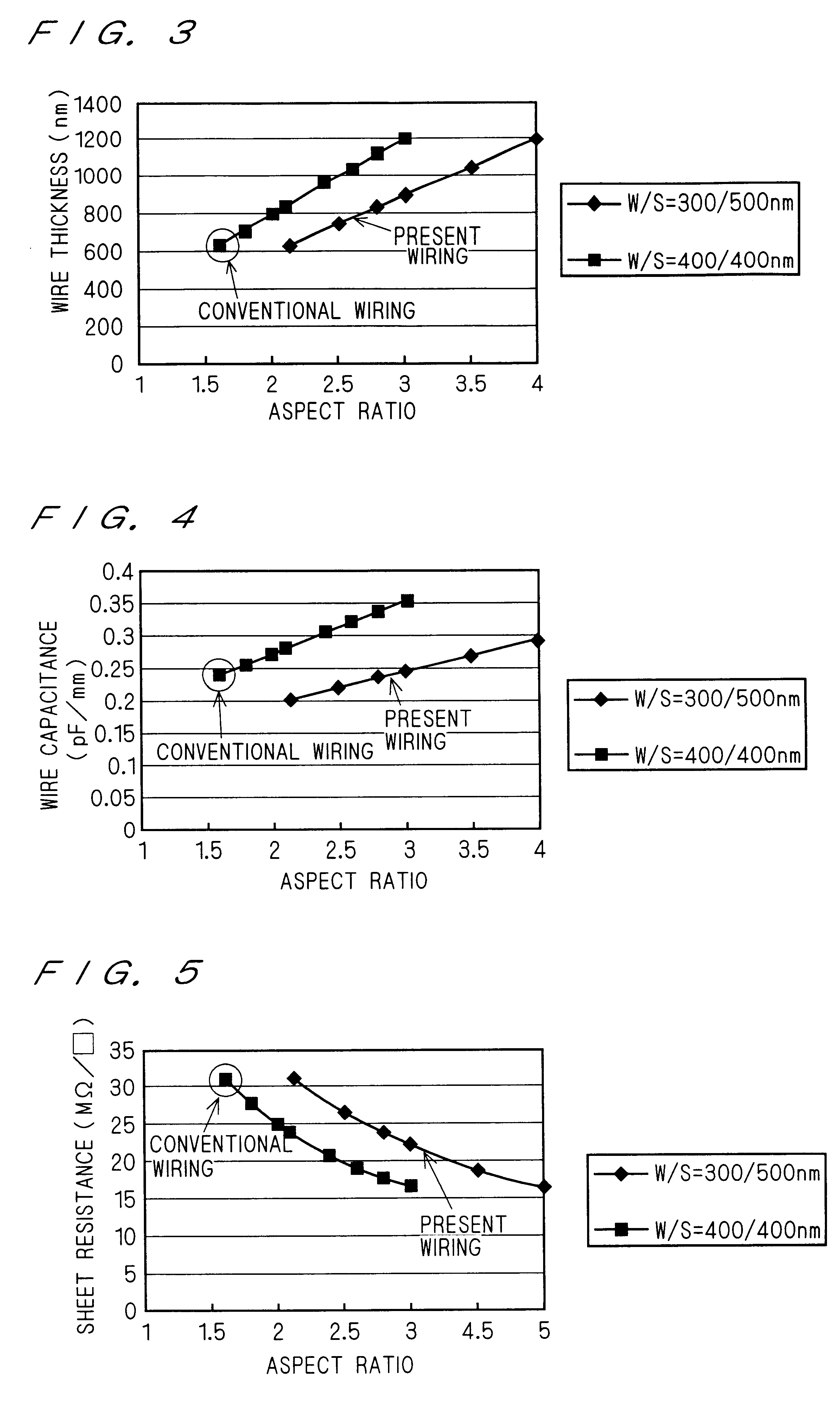Wiring structure for an integrated circuit
a wiring structure and integrated circuit technology, applied in the direction of electrical equipment, semiconductor devices, semiconductor/solid-state device details, etc., can solve the problems of increasing the width of the wire, reducing the wiring density, and compliing the manufacturing process,
- Summary
- Abstract
- Description
- Claims
- Application Information
AI Technical Summary
Problems solved by technology
Method used
Image
Examples
first preferred embodiment
FIG. 1 is a plan view illustrating a wiring structure of an integrated circuit according to a first preferred embodiment of the present invention. FIG. 2 is a sectional view schematically showing a section of the structure of FIG. 1 taken along a line A--A of FIG. 1.
Referring to FIGS. 1 and 2, a plurality of signal wires 1 and a plurality of ground / power wires 2 are arranged. A wire width W of a main part, other than a via-hole neighboring region 1a, of each of the signal wires 1 is determined to be a wire width W1, and a wiring space S between the main parts of every two adjacent ones of the signal wires 1 is determined to be a wiring space S1. A wire width W of the via-hole neighboring region 1a of each of the signal wires 1 is determined to be a wire width W2 larger than W1, and a wiring space S between the via-hole neighboring regions 1a of every two adjacent ones of the signal wires 1 is determined to be a wiring space S2 smaller than S1. In an analogous manner thereto, a wire ...
second preferred embodiment
FIG. 9 is a plan view illustrating a wiring structure of an integrated circuit according to a second preferred embodiment of the present invention. FIG. 10 is a sectional view schematically showing a section of the structure of FIG. 9 taken along a line B--B of FIG. 9.
Referring to FIGS. 9 and 10, the plurality of signal wires 1 and a plurality of ground / power wires 4 are arranged. A wire width W of the main part, other than the via-hole neighboring region 1a, of each of the signal wires 1 is determined to be the wire width W1 (the minimum wire width), and a wiring space S between the main parts of every two adjacent ones of the signal wires 1 is determined to be the wiring space S1. A wire width W of the via-hole neighboring region 1a of each of the signal wires 1 is determined to be the wire width W2 larger than W1, and a wiring space S between the via-hole neighboring regions 1a of every two adjacent ones of the signal wires 1 is determined to be the wiring space S2 smaller than S...
third preferred embodiment
FIG. 12 is a plan view illustrating a wiring structure of an integrated circuit according to a third preferred embodiment of the present invention. FIG. 13 is a sectional view schematically showing a section of the structure of FIG. 12 taken along a line C--C of FIG. 12.
Referring to FIGS. 12 and 13, the plurality of signal wires 1 and the plurality of ground / power wires 4 are arranged. A wire width W of the main part, other than the via-hole neighboring region 1a and a wiring-space margin side 1b, of each of the signal wires 1 is determined to be the wire width W1, and a wiring space S between the main parts of every two adjacent ones of the signal wires 1 is determined to be the wiring space S1. A wire width W of the via-hole neighboring region 1a of each of the signal wires 1 is determined to be the wire width W2 larger than W1, and a wiring space S between the via-hole neighboring regions 1a of every two adjacent ones of the signal wires 1 is determined to be the wiring space S2 ...
PUM
 Login to View More
Login to View More Abstract
Description
Claims
Application Information
 Login to View More
Login to View More - R&D
- Intellectual Property
- Life Sciences
- Materials
- Tech Scout
- Unparalleled Data Quality
- Higher Quality Content
- 60% Fewer Hallucinations
Browse by: Latest US Patents, China's latest patents, Technical Efficacy Thesaurus, Application Domain, Technology Topic, Popular Technical Reports.
© 2025 PatSnap. All rights reserved.Legal|Privacy policy|Modern Slavery Act Transparency Statement|Sitemap|About US| Contact US: help@patsnap.com



